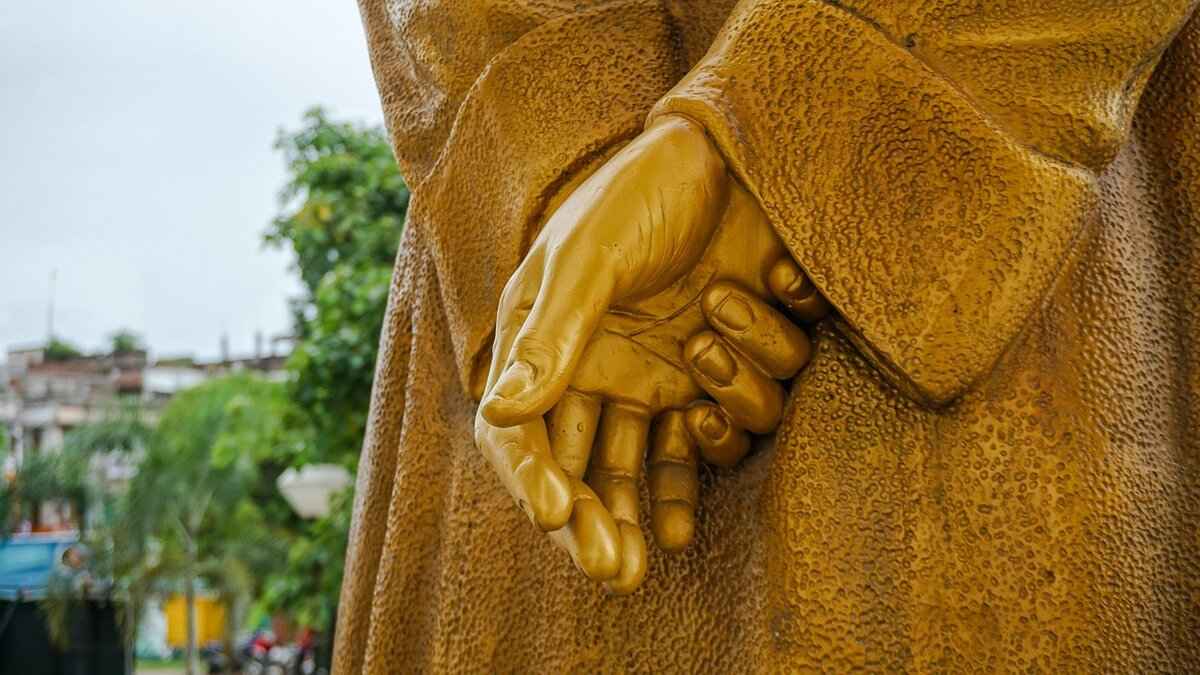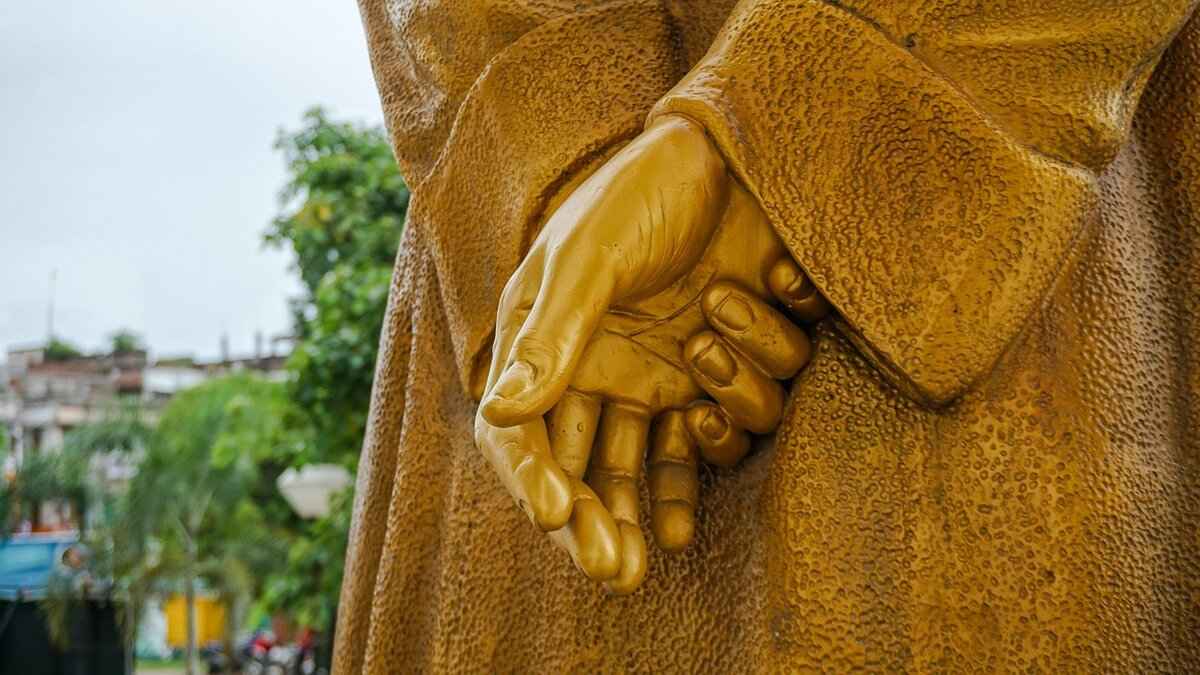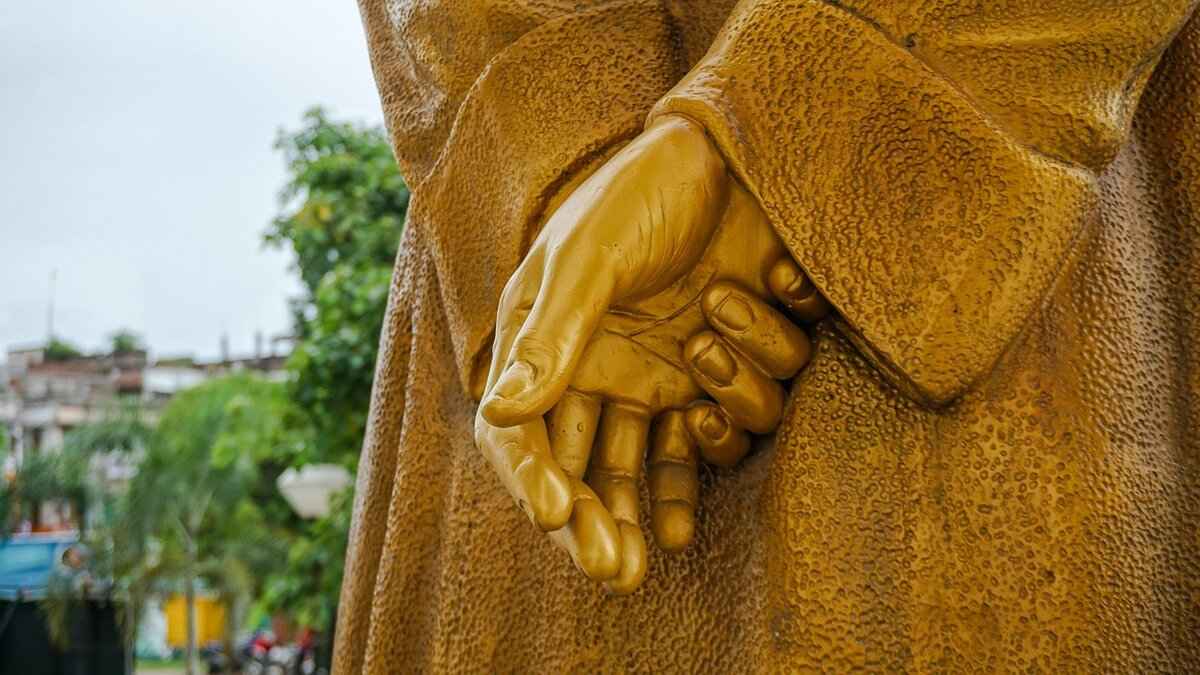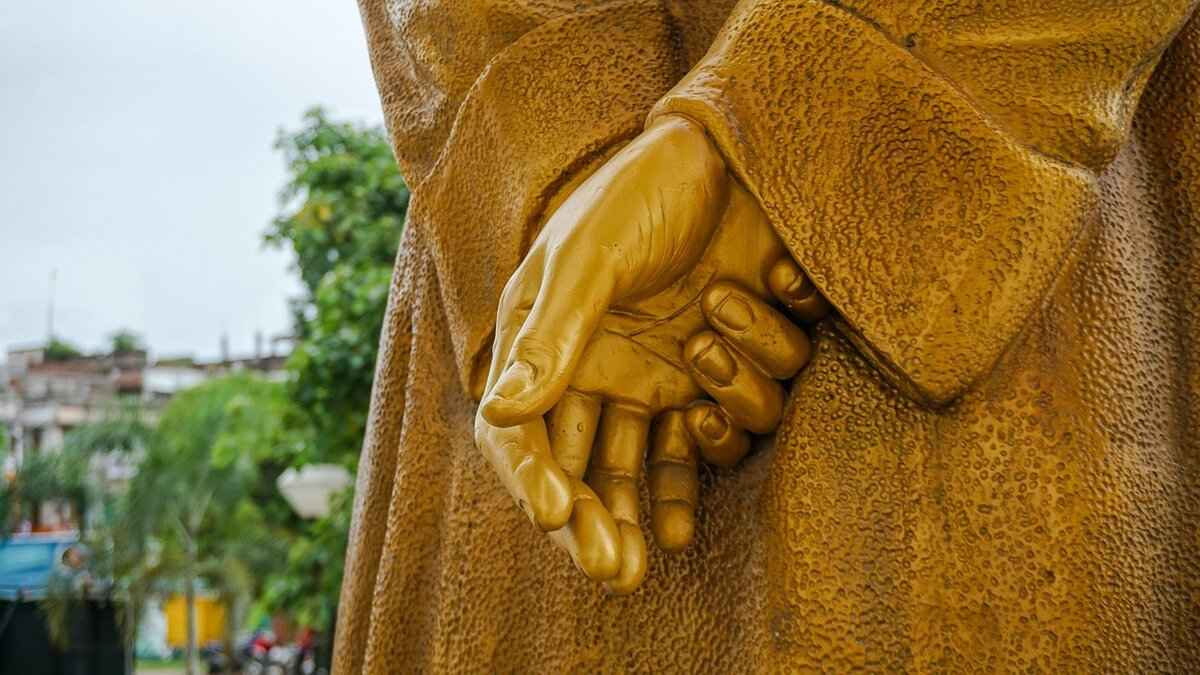This article delves into the profound impact of Rabindranath Tagore on Bengali literature, emphasizing his remarkable contributions, recurring themes, and the enduring influence he has exerted on countless generations of writers and poets.
Early Life and Influences
Tagore was born into a culturally rich family in 1861, which significantly influenced his artistic development. Growing up in a vibrant environment during the 19th-century Bengal Renaissance, he was exposed to a blend of traditional and modern ideas that would shape his literary voice.
Literary Achievements
As a prolific writer, Tagore produced an extensive body of work, including poetry, novels, and essays. His unique ability to fuse Indian and Western literary traditions earned him the prestigious Nobel Prize in Literature in 1913, making him the first non-European to receive this honor.
Poetry: The Heart of Tagore’s Work
Tagore’s poetry is celebrated for its lyrical beauty and emotional depth. His themes often revolve around love, nature, and spirituality, resonating with readers across different cultures and eras.
Notable Poetry Collections
- Gitanjali – A collection that showcases his mastery in weaving complex emotions into simple yet profound verses.
- Sonar Tori – Another significant work that reflects his innovative approach to modern poetry.
Influence of Folk Traditions
Tagore’s integration of Bengali folk traditions into his poetry made his work accessible and relatable, fostering a cultural renaissance in Bengal that celebrated its rich heritage.
Prose and Novels
Beyond poetry, Tagore’s novels and short stories address social issues and human relationships, reflecting his deep understanding of society and advocating for reform.
Philosophical Underpinnings
Tagore’s philosophical beliefs, rooted in spirituality and humanism, are evident throughout his literary works, encouraging readers to seek a deeper understanding of their existence.
Impact on Bengali Culture
Tagore’s influence extends well beyond literature; he has significantly shaped Bengali culture, inspiring movements in music, art, and education that continue to thrive today.
Legacy and Recognition
Rabindranath Tagore’s legacy remains vibrant through his timeless works, celebrated globally and studied in various academic fields, ensuring that his contributions to literature and culture are remembered for generations to come.

Early Life and Influences
Rabindranath Tagore’s early life was a tapestry woven with the threads of creativity, intellectualism, and cultural richness. Born into the illustrious Tagore family in 1861, he was surrounded by a vibrant artistic atmosphere. His father, Debendranath Tagore, was a prominent figure in the Brahmo Samaj, a reformist religious movement, which greatly influenced Tagore’s worldview. This environment nurtured his innate talent for writing and encouraged him to explore various forms of art.
The cultural setting of 19th-century Bengal played a pivotal role in shaping Tagore’s literary voice. This period was marked by a renaissance in literature and the arts, fostering a spirit of intellectual discourse and creativity. Tagore was exposed to diverse literary influences, ranging from classical Bengali literature to Western authors, which enriched his understanding of storytelling and poetic expression.
His early education at home, coupled with his later studies at Shantiniketan, a school founded by Tagore himself, allowed him to cultivate his artistic sensibilities. Here, he emphasized a holistic approach to education, integrating art, music, and nature into the curriculum. This unique educational philosophy not only shaped his own writing but also inspired future generations of artists and thinkers.
- Artistic Background: The Tagore family’s contribution to music, art, and literature.
- Cultural Renaissance: The impact of 19th-century Bengal on Tagore’s creative development.
- Holistic Education: The establishment of Shantiniketan and its influence on Tagore’s philosophy.
In summary, Tagore’s formative years were not just a backdrop but a crucial foundation that nurtured his literary genius. The interplay of family, culture, and education in his early life set the stage for a prolific career that would leave an indelible mark on Bengali literature and beyond.

Literary Achievements
Rabindranath Tagore, a luminary in the world of literature, made significant contributions that resonate deeply within the fabric of Bengali culture. His literary achievements span poetry, novels, and essays, showcasing a remarkable ability to intertwine Indian and Western literary traditions. This unique blend not only earned him the prestigious Nobel Prize in Literature in 1913 but also established him as a pivotal figure in the global literary landscape.
Tagore’s literary oeuvre is vast and varied, reflecting his profound understanding of human emotions and societal issues. His poetry, often described as lyrical and emotive, captures the essence of love, nature, and spirituality. Notable collections such as Gitanjali and Sonar Tori exemplify his ability to convey complex feelings through simple yet impactful language.
- Love and Longing: Tagore’s poems often explore the depths of love, portraying it as a force that transcends time and space.
- Nature: His vivid descriptions of nature reflect a deep connection with the environment, inviting readers to appreciate its beauty.
- Spirituality: Spiritual themes are prevalent, encouraging introspection and a quest for meaning in life.
Tagore’s impact extends beyond the written word; he was also a composer and painter. His musical works, known as Rabindra Sangeet, integrate poetic and musical elements, becoming a cornerstone of Bengali cultural identity. Furthermore, his establishment of Visva-Bharati University revolutionized education in Bengal, promoting a holistic approach that emphasized creativity and artistic expression.
Rabindranath Tagore’s literary achievements and cultural contributions have left an indelible mark on Bengali literature and beyond. His works continue to inspire and resonate, ensuring that his legacy will endure for generations to come. Tagore’s ability to blend diverse influences into a cohesive literary voice makes him a timeless figure in the realm of literature.
Poetry: The Heart of Tagore’s Work
Rabindranath Tagore’s poetry stands as a testament to his genius, characterized by its lyrical beauty and profound emotional resonance. His works delve into the intricate tapestry of human experience, often exploring themes such as love, nature, and spirituality. This exploration transcends cultural boundaries, allowing readers from diverse backgrounds to find solace and inspiration in his verses.
Tagore’s poetic style is marked by its simplicity and depth. He masterfully weaves complex emotions into accessible language, creating a unique blend that appeals to both the intellect and the heart. His poetry often reflects a deep connection with nature, portraying it as a living entity that interacts with human emotions. This connection is not merely aesthetic; it serves as a backdrop for the exploration of spiritual themes, inviting readers to reflect on their own existence and place in the universe.
In collections like Gitanjali and Sonar Tori, Tagore’s ability to encapsulate the essence of human experience is evident. His verses resonate with a universal appeal, making them relevant across different cultures and eras. The themes of love and longing, often depicted in his poetry, strike a chord with readers, evoking a sense of shared humanity.
Moreover, Tagore’s incorporation of Bengali folk traditions into his poetry enriches his work, allowing it to resonate with the common people. This cultural infusion not only democratizes his art but also fosters a cultural renaissance in Bengal, inspiring generations of poets and writers to explore their own cultural roots.
In conclusion, Tagore’s poetry remains a vital part of not just Bengali literature but the global literary landscape. His ability to articulate the human condition through lyrical expression continues to captivate and inspire readers, ensuring that his legacy endures through time.
Notable Poetry Collections
have played a pivotal role in showcasing the literary genius of Rabindranath Tagore. His works not only reflect his mastery of language but also his deep understanding of human emotions and the world around him.
Among his most celebrated collections, Gitanjali stands out as a monumental work that earned him the Nobel Prize in Literature in 1913. This collection consists of 103 poems that delve into themes of devotion, love, and spirituality. The lyrical quality of these poems resonates deeply with readers, inviting them to explore their own spiritual journeys.
Another significant collection, Sonar Tori, showcases Tagore’s ability to weave intricate emotions into simple yet profound verses. This collection reflects his connection to nature and the human experience, emphasizing the beauty of everyday life. The poems often depict the essence of Bengali culture and its rich traditions, making them relatable to a wide audience.
Tagore’s poetry collections also include Balaka, which translates to “The Flight of the Birds.” This collection captures the essence of freedom and the quest for self-discovery. The poems in Balaka explore the themes of migration and identity, resonating with readers who grapple with similar existential questions.
To further illustrate Tagore’s impact on literature, here is a table summarizing some of his most notable poetry collections:
| Collection Name | Year Published | Key Themes |
|---|---|---|
| Gitanjali | 1910 | Devotion, Spirituality, Love |
| Sonar Tori | 1916 | Nature, Everyday Life, Bengali Culture |
| Balaka | 1916 | Freedom, Migration, Identity |
In summary, Tagore’s notable poetry collections not only highlight his literary prowess but also serve as a reflection of the cultural and emotional landscape of his time. His ability to blend profound themes with accessible language has ensured that his works remain relevant and cherished by readers across the globe.
Gitanjali
, a collection of poems by the renowned Bengali poet Rabindranath Tagore, stands as a monumental work in the realm of literature. This article delves into the essence of Gitanjali, exploring its themes, significance, and the impact it has had on readers around the globe.
The title translates to “Song Offerings,” which encapsulates the spiritual and lyrical nature of the poems within. Tagore’s profound exploration of love, devotion, and the divine resonates deeply with readers, making it a timeless classic.
| Key Themes | Description |
|---|---|
| Spirituality | Tagore’s poems reflect a deep connection with the divine, inviting readers to explore their own spirituality. |
| Nature | The beauty of nature is intricately woven into the verses, symbolizing the relationship between humanity and the natural world. |
| Love | Expressions of love, both earthly and divine, permeate the collection, showcasing the emotional depth of Tagore’s writing. |
One of the most significant aspects of is its universal appeal. The themes present in Tagore’s work transcend cultural boundaries, allowing readers from various backgrounds to find meaning and solace in his words. This universality was a key factor in Tagore being awarded the Nobel Prize in Literature in 1913, making him the first non-European to receive this honor.
Moreover, Tagore’s incorporation of Bengali folk traditions into his poetry enriches the text, making it accessible and relatable. His ability to blend traditional elements with modern sensibilities has paved the way for future generations of poets and writers.
In conclusion, remains a cornerstone of Bengali literature and a significant contribution to world literature. Its themes of spirituality, love, and nature continue to inspire and resonate with readers, ensuring that Tagore’s legacy endures through the ages.
and
Pokémon: A Comprehensive Guide to the Fascinating World of Creatures
Pokémon, a beloved franchise that has captured the hearts of millions, is not just about battling; it’s a rich universe filled with diverse creatures, each with unique abilities and characteristics. This article delves into the intricate details of Pokémon, exploring their types, evolutions, and the cultural impact they have made globally.
Understanding Pokémon Types
- Water Type: Known for their adaptability and strength in battles.
- Fire Type: Often characterized by their high attack power and speed.
- Grass Type: Typically have healing abilities and defensive strategies.
How Do Pokémon Evolve?
Evolution is a key feature in Pokémon. As they gain experience, they can evolve into stronger forms. For example, Charmander evolves into Charmeleon and then into Charizard, enhancing its abilities and stats.
Popular Pokémon: Pikachu
Pikachu, the franchise’s mascot, is an Electric-type Pokémon. Its popularity stems from its cute appearance and powerful electric attacks. Pikachu evolves into Raichu, further increasing its electric capabilities.
The Cultural Impact of Pokémon
Since its inception in the late 1990s, Pokémon has influenced various aspects of culture, from television shows and movies to merchandise and video games. The franchise promotes themes of friendship, teamwork, and perseverance, resonating with fans of all ages.
Conclusion
In conclusion, Pokémon is more than just a game; it’s a cultural phenomenon that continues to evolve. With its diverse creatures, engaging gameplay, and positive messages, Pokémon remains a significant part of modern entertainment.
Sonar Tori
, which translates to “Golden Boat,” is a celebrated poem by the renowned Bengali poet Rabindranath Tagore. This work is emblematic of Tagore’s deep connection to nature and his philosophical musings on life and existence.
The poem reflects Tagore’s mastery in weaving complex emotions into simple yet profound verses. It invites readers to embark on a journey of introspection and contemplation, making it a timeless piece that resonates with audiences across generations.
- Nature and Spirituality: The poem beautifully intertwines the elements of nature with spiritual reflections, showcasing Tagore’s belief in the interconnectedness of life.
- Yearning and Desire: The imagery of the golden boat symbolizes the longing for freedom and the pursuit of dreams, a common theme in Tagore’s works.
- Human Experience: Through the metaphor of the boat, Tagore explores the journey of life and the human condition, prompting readers to reflect on their own paths.
Tagore’s has significantly influenced Bengali literature, inspiring countless writers and poets to explore similar themes of nature, spirituality, and human emotions. His ability to convey profound messages through simple language has made his works accessible and relatable.
In conclusion, stands as a testament to Rabindranath Tagore’s literary genius. Its rich themes and emotional depth continue to inspire readers and writers alike, ensuring that Tagore’s legacy endures through the ages. As we reflect on this beautiful poem, we are reminded of the power of literature to transcend time and connect us with our innermost thoughts and feelings.
showcase Tagore’s mastery in weaving complex emotions into simple yet profound verses, establishing him as a pioneer in modern poetry.
Rabindranath Tagore’s Mastery in Poetry
Rabindranath Tagore, a luminary of Bengali literature, stands as a pioneer in modern poetry. His ability to weave complex emotions into simple yet profound verses has left an indelible mark on the literary world. This article delves into Tagore’s poetic genius, exploring his themes, styles, and the enduring influence of his work.
- Exploration of Themes: Tagore’s poetry often revolves around universal themes such as love, nature, and spirituality. His verses resonate across cultures, making his work timeless.
- Lyrical Beauty: The lyrical quality of Tagore’s poetry captivates readers. His use of rhythm and melody enhances the emotional depth of his work.
- Folk Traditions: By incorporating Bengali folk traditions, Tagore made his poetry accessible to the common people, enriching the cultural landscape of Bengal.
Notable Works: Collections like Gitanjali and Sonar Tori showcase Tagore’s mastery in expressing intricate emotions through simple language. These works are celebrated for their profound insights into the human experience.
Impact on Modern Poetry: Tagore’s innovative approach has influenced countless poets and writers. His blending of Eastern and Western literary traditions paved the way for new forms of expression in poetry.
Conclusion: Rabindranath Tagore’s legacy as a master poet continues to inspire generations. His ability to convey complex emotions in a relatable manner cements his status as a towering figure in the world of literature.
Influence of Folk Traditions
Rabindranath Tagore’s profound impact on Bengali literature is significantly attributed to his incorporation of folk traditions into his poetry. By weaving the rich tapestry of Bengali folk culture into his literary works, Tagore created a bridge between the elite literary world and the everyday experiences of the common people. This approach not only enriched his poetry but also made it more accessible, resonating deeply with the hearts of his readers.
Tagore’s poetry often features traditional themes, motifs, and narratives that reflect the lives, struggles, and aspirations of rural Bengalis. His use of local dialects and idiomatic expressions helped to foster a sense of belonging, allowing readers from various backgrounds to connect with his work on a personal level. This accessibility was revolutionary, as it democratized literature in a time when much of it was confined to the educated elite.
The cultural renaissance in Bengal during Tagore’s time was significantly influenced by his ability to blend folk elements with high art. Through his poetry, he celebrated the rich oral traditions of Bengal, including songs, tales, and rituals, thus preserving and revitalizing these cultural practices. His works often reflect the rhythms and cadences of folk music, creating a lyrical quality that enhances their emotional depth.
Moreover, Tagore’s emphasis on folk traditions served as an inspiration for future generations of writers and artists, encouraging them to explore their own cultural roots. This legacy is evident in the works of contemporary Bengali authors and poets who continue to draw from the wellspring of their heritage.
In conclusion, Tagore’s integration of Bengali folk traditions into his poetry not only enriched his literary output but also played a crucial role in fostering a cultural renaissance in Bengal. His ability to make literature relatable and accessible has left an indelible mark on Bengali culture, ensuring that the voices of the common people are celebrated and remembered.
Prose and Novels
Rabindranath Tagore is not only celebrated for his poetry but also for his remarkable contributions to prose, particularly in the form of novels and short stories. His literary works delve deeply into the intricacies of human relationships and the pressing social issues of his time, showcasing his profound understanding of society and its dynamics.
Tagore’s novels often explore themes of love, identity, and social reform. For instance, in his novel Ghare-Baire (The Home and the World), he presents a nuanced view of the conflict between tradition and modernity, encapsulating the struggles faced by individuals in a rapidly changing society. This work not only reflects Tagore’s literary genius but also his commitment to advocating for social change and the empowerment of women.
His short stories, such as those found in Galpaguchchha (A Collection of Stories), often highlight the everyday lives of ordinary people, illuminating their struggles, dreams, and aspirations. Through these narratives, Tagore emphasizes the importance of empathy and understanding in human relationships, urging readers to reflect on their own lives and the society around them.
Furthermore, Tagore’s keen observations of societal norms and injustices resonate through his prose, making it a powerful medium for advocacy. He addresses issues such as caste discrimination, gender inequality, and the impact of colonialism on Indian society. His ability to intertwine personal stories with broader social critiques allows readers to engage with complex themes in a relatable manner.
In conclusion, Tagore’s prose and novels are a testament to his literary prowess and his unwavering commitment to social reform. By exploring the depths of human relationships and the societal challenges of his time, he not only enriched Bengali literature but also inspired generations to reflect on the world around them.
Philosophical Underpinnings
Rabindranath Tagore’s literary legacy is deeply intertwined with his philosophical beliefs, which are characterized by a profound sense of spirituality and humanism. His works serve as a medium through which he invites readers to explore the complexities of existence and their role in the universe. Tagore’s philosophy encourages a quest for self-awareness and a deeper understanding of the human condition.
At the core of Tagore’s philosophy is the belief in the inherent unity of humanity. He emphasizes that all individuals, regardless of their cultural or national backgrounds, share a common essence. This universalism is reflected in his writings, where he often advocates for compassion and brotherhood. Tagore’s vision transcends the boundaries of religion and nationality, promoting a harmonious coexistence among diverse communities.
Moreover, Tagore’s exploration of spirituality is intricately linked to the natural world. He perceives nature as a manifestation of the divine, urging readers to find beauty and meaning in their surroundings. His poetry often paints vivid images of landscapes, showcasing his belief that nature is a source of inspiration and a pathway to spiritual enlightenment.
- Human Values: Tagore’s works consistently highlight the importance of empathy and understanding in human relationships.
- Connection to the Cosmos: He encourages readers to reflect on their relationship with the universe, fostering a sense of belonging.
- Art as a Spiritual Experience: Tagore viewed artistic expression as a means to connect with the divine, making creativity an integral part of spirituality.
In conclusion, Tagore’s philosophical underpinnings not only enrich his literary works but also serve as a guiding light for readers seeking to navigate the complexities of life. His emphasis on humanism, spirituality, and the interconnectedness of all beings continues to resonate, encouraging a deeper exploration of our place in the world.
Humanism and Universalism
are central themes in the works of Rabindranath Tagore, reflecting his profound belief in the interconnectedness of all humanity. Through his writings, Tagore articulated a vision that transcended cultural and national boundaries, advocating for a world united by shared values and mutual respect.
Tagore’s literary contributions emphasize the importance of compassion and understanding. He believed that every individual, regardless of their background, possesses inherent dignity and worth. This belief is vividly illustrated in his poems and essays, where he often explores the struggles and triumphs of the human spirit.
- Universal Brotherhood: Tagore championed the idea that all human beings are part of a larger family. He envisioned a society where differences are celebrated rather than feared, fostering a sense of belonging among diverse communities.
- Human Values: His emphasis on core human values such as love, empathy, and justice serves as a reminder of our shared humanity. Tagore’s works encourage readers to cultivate these values in their daily lives, promoting harmony and peace.
- Transcending Boundaries: Tagore’s writings often challenge the rigid boundaries set by nations and cultures. He believed that true understanding comes from recognizing our similarities rather than our differences, urging individuals to embrace a global perspective.
Moreover, Tagore’s philosophy of humanism is not merely theoretical; it is reflected in his actions and initiatives. He founded educational institutions that promoted holistic learning and creativity, aiming to nurture individuals who would contribute positively to society.
In conclusion, Rabindranath Tagore’s emphasis on humanism and universalism continues to resonate in today’s world. His vision of a harmonious existence, where cultural and national boundaries dissolve in the face of shared humanity, remains a guiding principle for many. As we navigate the complexities of modern life, Tagore’s insights serve as a powerful reminder of the importance of fostering connections that unite us all.
Spirituality in Literature
plays a pivotal role in shaping the narratives and themes that resonate deeply with readers. This exploration often intertwines with the elements of nature and the multifaceted human experience, inviting individuals to reflect on their profound connections to the cosmos and the divine. Through the lens of literature, authors like Rabindranath Tagore have masterfully illustrated how spirituality can serve as a bridge between humanity and the universe.
Tagore’s works often depict the interconnectedness of all living things, suggesting that nature is not merely a backdrop but a vital participant in the spiritual journey. His poetry and prose evoke a sense of wonder, urging readers to contemplate their place within the grand tapestry of existence. This approach not only enriches the narrative but also encourages a deeper understanding of one’s spiritual path.
- Nature as a Spiritual Guide: Tagore frequently portrays nature as a source of inspiration and enlightenment. The beauty of a sunset or the tranquility of a forest can evoke feelings of peace and connection, reinforcing the idea that the natural world is a reflection of the divine.
- Human Experience: The exploration of human emotions and experiences in Tagore’s literature often reveals the spiritual struggles and triumphs that define our lives. This duality allows readers to see themselves in the narratives, fostering a sense of empathy and understanding.
- Cosmic Connection: Tagore’s reflections on spirituality encourage readers to look beyond the mundane and recognize their inherent connection to the cosmos. This perspective invites a sense of belonging and purpose, emphasizing that we are all part of something much larger than ourselves.
In conclusion, literature serves as a powerful medium for exploring spirituality, particularly through the works of authors like Tagore. By intertwining themes of nature, human experience, and cosmic connection, readers are invited to embark on a journey of self-discovery and reflection. This not only enriches their understanding of literature but also deepens their appreciation for the spiritual dimensions of life.
Impact on Bengali Culture
Rabindranath Tagore is a name that resonates deeply within the fabric of Bengali culture. His contributions extend far beyond the realm of literature, influencing various artistic and educational movements that continue to thrive today. This article explores the multifaceted impact Tagore has had on Bengali culture, emphasizing his role in shaping music, art, and education.
Tagore’s musical legacy is encapsulated in the genre known as Rabindra Sangeet. His compositions, characterized by their lyrical beauty and emotional depth, have become a cornerstone of Bengali music. These songs often reflect themes of love, nature, and spirituality, making them profoundly relatable to the Bengali populace. The melodies of Rabindra Sangeet are not merely songs; they are an integral part of cultural celebrations, festivals, and everyday life in Bengal.
In addition to music, Tagore’s influence permeated the visual arts. He was an accomplished painter himself, and his artistic vision inspired many contemporary and future artists. His belief in the interconnectedness of art forms encouraged a renaissance in Bengali visual arts, leading to a flourishing of creativity that embraced both traditional and modern styles.
Tagore founded Visva-Bharati University in Santiniketan, which was revolutionary in its approach to education. His philosophy emphasized creativity, freedom, and a holistic development of the individual. Tagore believed that education should not be confined to rote learning but should foster a connection with nature and a sense of community. This vision has influenced educational practices not only in Bengal but also in various parts of India and beyond.
Tagore’s impact on Bengali culture is profound and enduring. His works and philosophies continue to inspire generations, fostering a sense of identity and pride among Bengalis. As we celebrate his contributions, it is essential to recognize how his vision has shaped the cultural landscape of Bengal, making it a vibrant hub of artistic expression and intellectual thought.

Music and Dance
have always been essential components of Bengali cultural heritage, and few individuals have contributed as significantly to this realm as Rabindranath Tagore. His musical compositions, collectively referred to as Rabindra Sangeet, encapsulate the essence of Bengali identity, harmonizing traditional melodies with profound lyrical themes.
Tagore’s music is characterized by its melodic richness and lyrical depth, which resonate deeply with listeners. His songs often explore themes of love, nature, and the spiritual journey, making them relatable across generations. The intricate melodies are not only pleasing to the ear but also evoke a sense of emotional connection, inviting listeners to reflect on their own experiences.
In addition to their aesthetic appeal, Tagore’s songs serve as a medium for cultural expression, often performed during significant events and festivals. The rhythmic patterns and poetic lyrics of Rabindra Sangeet have been instrumental in fostering a sense of community and shared cultural identity among Bengalis, both in India and around the world.
Tagore’s integration of folk traditions into his compositions further enriched his music, allowing it to transcend social and economic barriers. His ability to blend classical music with folk elements made his work accessible to a broader audience, thereby promoting a cultural renaissance in Bengal during his time.
Moreover, Tagore’s influence extends beyond music; he also played a crucial role in the evolution of Bengali dance. His choreographic works often accompanied his songs, creating a holistic artistic experience that combined music, dance, and poetry. This interdisciplinary approach has inspired countless artists and continues to shape the artistic landscape of Bengal.
In conclusion, Rabindranath Tagore’s contributions to are invaluable, as they have not only enriched Bengali culture but also left an indelible mark on the global artistic community. His legacy lives on through the continued popularity of Rabindra Sangeet and the vibrant dance forms that accompany it.
Educational Reforms
Rabindranath Tagore was not only a literary giant but also a visionary who profoundly transformed the educational landscape of Bengal and beyond. His founding of Visva-Bharati University in 1921 marked a significant milestone in the realm of education, where he sought to integrate creativity, art, and holistic development into the learning process.
Tagore’s educational philosophy was revolutionary for its time. He believed that education should not merely focus on rote learning or the accumulation of knowledge, but rather foster creativity and critical thinking. At Visva-Bharati, he encouraged students to engage with their surroundings and express themselves through various forms of art, including music, dance, and visual arts. This approach aimed to cultivate a sense of individuality and self-expression among learners.
Moreover, Tagore’s vision extended beyond traditional academic subjects. He emphasized the importance of nature and environmental awareness, advocating for an education that connected students with the world around them. This holistic approach aimed to develop not just the mind but also the heart and spirit of the learners, making them more empathetic and socially aware individuals.
Tagore’s influence on education was not limited to his university. His ideas inspired numerous educational reforms across Bengal and India, promoting the integration of artistic expression in schools and encouraging educators to adopt more progressive teaching methods. His legacy continues to resonate in modern educational practices that prioritize creativity and emotional intelligence.
In conclusion, Rabindranath Tagore’s establishment of Visva-Bharati University and his educational reforms have left an indelible mark on the educational landscape. By championing a philosophy that values creativity and holistic development, he has paved the way for future generations to learn in a more integrated and meaningful way.
Legacy and Recognition
Rabindranath Tagore’s legacy is a testament to his profound impact on literature, culture, and education. His works, which span poetry, prose, music, and art, have left an indelible mark not only on Bengali culture but also on the global literary landscape. Celebrated for their emotional depth and philosophical insights, Tagore’s writings continue to resonate with readers and scholars alike.
Tagore was the first non-European to be awarded the Nobel Prize in Literature in 1913, a recognition that solidified his status as a literary giant. His ability to intertwine Indian traditions with Western influences created a unique voice that transcended cultural boundaries. This fusion is evident in his celebrated works, such as Gitanjali, which remains a cornerstone of world literature.
Moreover, Tagore’s contributions extend beyond literature; he was a visionary who influenced various fields, including music and education. His creation of Rabindra Sangeet, a genre of music characterized by its lyrical beauty and emotional depth, has become an integral part of Bengali identity. Through his songs, he expressed the complexities of human emotions, love, and nature, making them relatable to the masses.
In the realm of education, Tagore founded Visva-Bharati University in Santiniketan, which emphasized a holistic approach to learning, integrating arts and culture into the curriculum. This institution has had a lasting impact on educational practices, promoting creativity and critical thinking.
As we reflect on Tagore’s legacy, it is clear that his works continue to inspire generations of writers, artists, and thinkers. His emphasis on humanism and universal brotherhood encourages a vision of a harmonious world, making his contributions to literature and culture not just relevant, but essential for future generations.

Frequently Asked Questions
- What inspired Rabindranath Tagore’s writing?
Rabindranath Tagore was deeply influenced by his family’s artistic background and the vibrant cultural environment of 19th-century Bengal. This rich milieu fostered creativity and intellectual discourse, which played a significant role in shaping his literary voice.
- What are some of Tagore’s notable works?
Tagore’s literary achievements are vast, but his most celebrated works include poetry collections like Gitanjali and Sonar Tori, as well as novels and essays that explore complex themes of love, nature, and spirituality, showcasing his unique blend of Indian and Western literary traditions.
- How did Tagore impact Bengali culture?
Tagore’s influence extended beyond literature; he played a pivotal role in shaping Bengali culture through his contributions to music, art, and education. His compositions, known as Rabindra Sangeet, are integral to Bengali cultural identity, while his educational reforms at Visva-Bharati University emphasized creativity and holistic development.
- What themes are prevalent in Tagore’s poetry?
Tagore’s poetry often delves into themes of love, nature, and spirituality, resonating with readers across cultures and time. His ability to weave complex emotions into simple yet profound verses is one of the hallmarks of his work.
- Why is Tagore considered a pioneer in modern poetry?
Tagore is regarded as a pioneer in modern poetry due to his innovative style that blends traditional Bengali folk elements with contemporary themes. His works broke away from conventional forms, making poetry more accessible and relatable to the common people.














